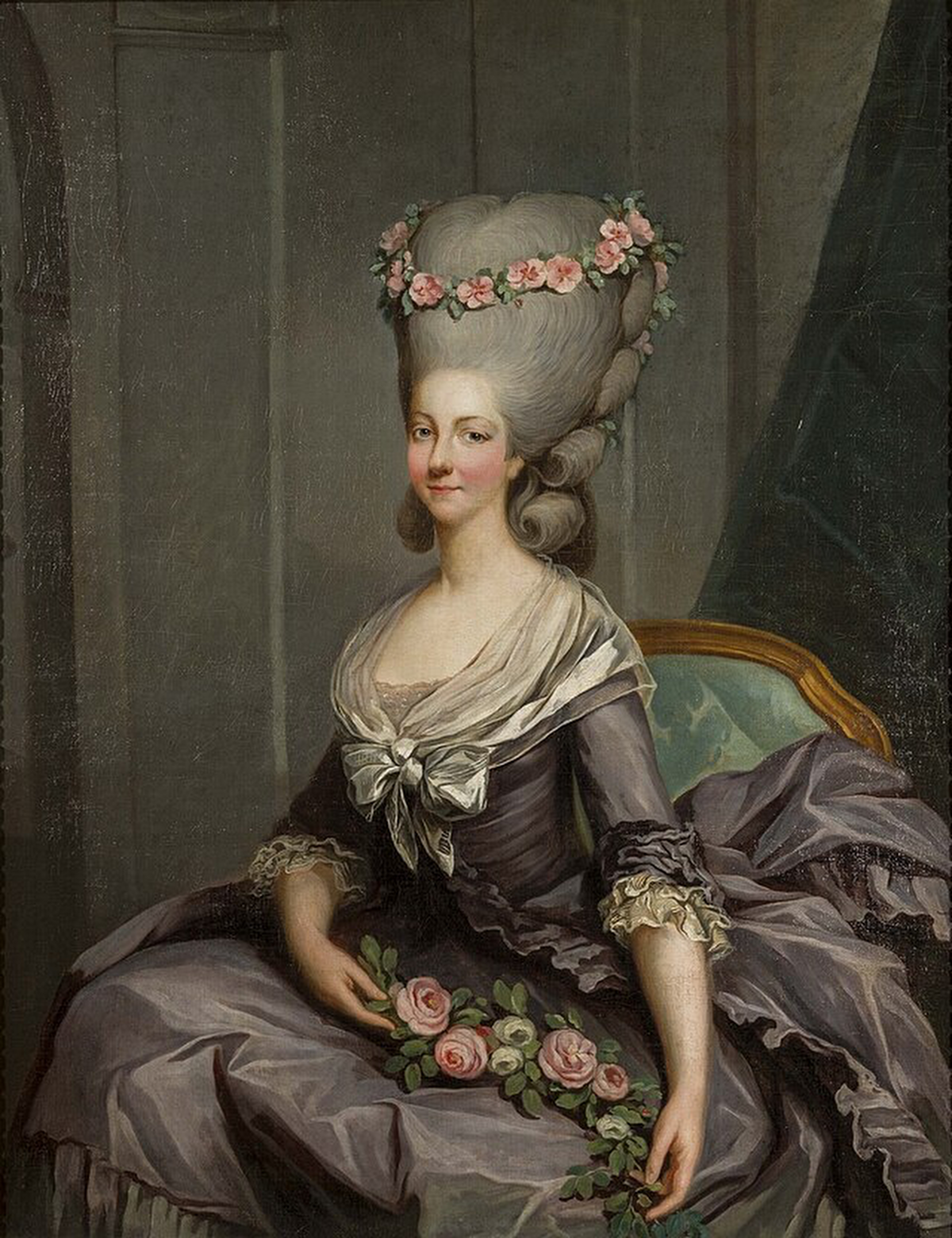จากทรงผม “A La Pompadour” ถึง ทรงผม “โซขุฮัตสึ” (束髪): การเดินทางของทรงผมแม่ญิงล้านนาในสมัยรัชกาลที่ ๕ ตอนปลาย
จากทรงผม “A La Pompadour” ถึง ทรงผม “โซขุฮัตสึ” (束髪): การเดินทางของทรงผมแม่ญิงล้านนาในสมัยรัชกาลที่ ๕ ตอนปลาย
เมื่อแฟชั่นข้ามวัฒนธรรมผ่านทรงผมของแม่ญิงล้านนา
ในสมัยรัชกาลที่ ๕ ตอนปลาย (พ.ศ. 2440–2453 หรือ ค.ศ. 1897–1910) แฟชั่นของสตรีชั้นสูงในสยามเริ่มเปลี่ยนแปลงอย่างเห็นได้ชัด โดยเฉพาะในเรื่อง ทรงผม ซึ่งสะท้อนอิทธิพลจากราชสำนักยุโรปและญี่ปุ่นอย่างน่าสนใจ ทรงผมที่หญิงสาวนิยมในยุคนี้มีลักษณะเกล้ามวยสูงเหนือท้ายทอย หรือทรงผมแบบเกล้ามวยพองสูง (Upswept Hair) เป็นสัญลักษณ์ของความงามสมัยใหม่ ทรงผมนี้ไม่ใช่เพียงเรื่องความงาม แต่เป็นกระจกสะท้อนการรับอารยธรรมจากต่างประเทศ และกลายเป็นส่วนหนึ่งของแฟชั่นของผู้หญิงล้านนาในเวลาต่อมา
ต้นธารจากฝรั่งเศสสู่ญี่ปุ่น: จากทรงผม “A La Pompadour” ถึง ทรงผม “โซขุฮัตสึ” (束髪)
จุดเริ่มต้นของแรงบันดาลใจเกิดจากราชสำนักฝรั่งเศสในศตวรรษที่ 18 ในยุคศิลปะแบบ Rococo กับทรงผมที่ชื่อว่า "A La Pompadour" ซึ่งตั้งชื่อตาม มาดาม เดอ ปงปาดูร์ (Madame de Pompadour, ค.ศ. 1721–1764) พระสนมเอกของพระเจ้าหลุยส์ที่ 15 ทรงผมนี้เน้นการตีผมให้สูง พอง และมีรูปทรงหรูหรา กลายเป็นสัญลักษณ์ของความมีรสนิยมของผู้หญิงในสังคมชั้นสูงในยุโรปในช่วงเวลานั้น
ต่อมา ในช่วง ยุคเมจิของญี่ปุ่น (ค.ศ. 1868–1912) ซึ่งเป็นยุคที่ญี่ปุ่นเปิดประเทศและรับอิทธิพลตะวันตก ทรงผมแบบ “โซขุฮัตสึ (束髪)” ก็ถือกำเนิดขึ้น โดยได้รับแรงบันดาลใจจากทรงปงปาดูร์ของฝรั่งเศส แล้วปรับให้เหมาะกับผมหญิงญี่ปุ่น เป็นการเกล้ามวยสูงที่ทันสมัยและแสดงถึงการศึกษาและความก้าวหน้า
กระแสทรงผมปงปาดูร์ในโลกตะวันตก: จากฝรั่งเศสสู่ Gibson Girl
ในช่วงเวลาเดียวกัน — ต้นคริสต์ศตวรรษที่ 20 ซึ่งตรงกับ ยุคเอ็ดเวิร์ดเดียน (Edwardian Era, ค.ศ. 1901–1910) ในอังกฤษและยุโรป — ทรงผมแบบ A La Pompadour ก็กลับมาได้รับความนิยมอีกครั้งในหมู่หญิงสาวชนชั้นกลางและสูงในโลกตะวันตก ผ่านภาพลักษณ์ของ Gibson Girl ซึ่งเป็นตัวแทนของ “หญิงทันสมัย” ในอเมริกาและยุโรป ทรงผมของ Gibson Girl เน้นการเกล้าผมให้พองและสูง ด้วยปริมาตรที่งามสง่าและเป็นธรรมชาติ ซึ่งได้รับอิทธิพลโดยตรงจากทรง Pompadour ของศตวรรษก่อน
ภาพวาดของ Charles Dana Gibson ที่สร้างภาพหญิงสาวอเมริกันผู้มั่นใจ ทันสมัย และมีความคิดเป็นของตนเอง ยิ่งตอกย้ำให้ทรงผมแบบนี้กลายเป็นแฟชั่นหลักทั่วโลกตะวันตกในเวลานั้น และมีอิทธิพลมาไกลถึงทวีปเอเชียรวมถึงสยาม โดยเฉพาะในหมู่สตรีผู้ที่มีการศึกษาและอยู่ในสังคมเมืองหลวง
สำหรับทรงผมทรงนี้ในสยาม ผู้ที่นำทรงผมนี้มาเผยแพร่ในสยามคาดว่าคือ นางยะสุอิ เท็ตสึ (Tetsu Yasui, 安井てつ) ครูหญิงชาวญี่ปุ่นผู้บุกเบิกการศึกษาสตรีสมัยใหม่ในสยาม โดยในปี พ.ศ. 2447 (ค.ศ. 1904) เธอได้รับแต่งตั้งจากกระทรวงศึกษาธิการของญี่ปุ่นให้เดินทางมายังกรุงเทพฯ เพื่อดำรงตำแหน่ง อาจารย์ใหญ่คนแรกของโรงเรียนราชินี ซึ่งถือเป็นโรงเรียนสตรีชั้นนำของสยามในยุคนั้น
แม้จะต้องเผชิญกับความท้าทายด้านภาษา วัฒนธรรม และอากาศที่แตกต่างจากบ้านเกิด แต่ยะสุอิ เท็ตสึได้ทุ่มเทสอนวิชาคณิตศาสตร์และภาษาอังกฤษให้กับนักเรียนหญิงด้วยความเข้มงวดและความเมตตา พร้อมทั้งปลูกฝังวินัย ความรู้สมัยใหม่ และแบบแผนการวางตัวแบบสตรีมีการศึกษา รวมถึงภาพลักษณ์ภายนอกอันสง่างาม
หนึ่งในสิ่งที่สร้างความประทับใจให้กับนักเรียนและข้าราชบริพารฝ่ายใน คือ ทรงผมแบบ “โซขุฮัตสึ” (束髪) ซึ่งเธอเกล้าไว้อย่างเรียบร้อยและหรูหราทุกวัน ทรงผมแบบนี้แสดงถึงความเป็นหญิงทันสมัย การศึกษา ความสะอาดเรียบร้อย และความนอบน้อมตามแบบฉบับญี่ปุ่น กลายเป็นแบบอย่างให้บรรดานักเรียนหญิง และแพร่หลายมาถึงราชสำนักฝ่ายใน
อีกหนึ่งหลักฐานที่น่าสนใจเกี่ยวกับการเผยแพร่วัฒนธรรมทรงผมแบบญี่ปุ่นในราชสำนักไทย คือเรื่องราวของท่านผู้หญิงขจร ภะรตราชา (พ.ศ. 2429–2511) ซึ่งเคยเป็นข้าหลวงของสมเด็จพระนางเจ้าเสาวภาผ่องศรี พระบรมราชินีนาถในรัชกาลที่ 5 ท่านเป็นหนึ่งในนักเรียนไทยรุ่นแรกที่ได้รับพระราชทานทุนให้เดินทางไปศึกษาที่ประเทศญี่ปุ่น เมื่อปี พ.ศ. 2446 เพื่อไปเรียนวิชาปักสะดึง และวาดเขียนแบบญี่ปุ่น โดยออกเดินทางพร้อมกับนายโทคิชิ มาซาโอะ หรือที่คนไทยเรียกว่านายเมาเซา และภริยา หลังจากใช้ชีวิตอยู่ที่ญี่ปุ่นเป็นเวลาราว 4 ปี ท่านผู้หญิงขจรกลับมาสู่ราชสำนักไทย พร้อมนำวัฒนธรรมหลายอย่างจากญี่ปุ่นกลับมาด้วย หนึ่งในนั้นคือแบบแผนการทำผมที่ได้รับความนิยมในราชสำนักสยามช่วงต้นคริสต์ศตวรรษที่ 20 โดยเฉพาะในหมู่ข้าหลวงและสตรีชั้นสูง ซึ่งมีลักษณะคล้ายทรงโซขุฮัตสึของญี่ปุ่น เรื่องราวเหล่านี้ได้รับการบันทึกไว้ในหนังสืองานศพของท่านผู้หญิงขจร ถือเป็นอีกแหล่งอ้างอิงสำคัญที่ยืนยันบทบาทของท่านในฐานะผู้ถ่ายทอดทรงผมแบบญี่ปุ่นในราชสำนักสยามยุคนั้น
พระราชชายาเจ้าดารารัศมี: แม่หญิงล้านนาผู้นำแฟชั่น
พระราชชายาเจ้าดารารัศมี ในรัชกาลที่ ๕ มีฐานะเป็นเจ้าหญิงล้านนา จากเชียงใหม่ ได้เข้ารับราชการในราชสำนักสยามพร้อมกับข้าราชบริพารหญิงจากเชียงใหม่และล้านนา ในช่วงที่ประทับอยู่ในกรุงเทพฯ พระองค์ทรงรับอิทธิพลทรงผมแบบมวยพองสูงที่เริ่มเป็นที่นิยมในหมู่สตรีในวัง และปรับนำมาใช้ทั้งส่วนพระองค์และในหมู่ข้าหลวงฝ่ายในที่อยู่ภายใต้การดูแลของพระองค์ และแฟชั่นทรงผมแบบเกล้ามวยพองสูงนี้ก็แพร่อิทธิพลไปถึงเชียงใหม่ ซึ่งเป็นศูนย์กลางของวัฒนธรรมและแฟชั่นในหัวเมืองเหนือ
ขอขอบพระคุณเพจเฟซบุ๊ก “ประวัติศาสตร์ราชอาณาจักรสยาม”
ที่กรุณาแบ่งปันข้อมูลอันทรงคุณค่าเกี่ยวกับวัฒนธรรมราชสำนักสยาม แฟชั่น และทรงผมของสตรี ในช่วงเวลาแห่งการเปลี่ยนผ่านสู่โลกสมัยใหม่
From “A La Pompadour” to “Sokuhatsu”: The Origins of the Lanna Women’s Hairstyle in Late King Chulalongkorn’s Reign
A Transcultural Journey Through the Hair of Siamese Women
In the late years of King Chulalongkorn’s reign (circa 1897–1910 CE), the fashion of upper-class Siamese women began to change noticeably—especially in terms of hairstyles, which increasingly reflected the influence of both European and Japanese courts. One of the most prominent trends was the upswept hairstyle, a refined look featuring a high chignon at the back of the head. More than just a beauty statement, this hairstyle was a mirror of global cultural exchanges and would later become a key feature of fashionable Lanna women.
The Journey from France to Japan: A La Pompadour and Sokuhatsu
The inspiration for this elegant coiffure can be traced back to the French royal court of the 18th century, where a hairstyle known as “A La Pompadour” rose to fame. Named after Madame de Pompadour (1721–1764), the influential mistress of King Louis XV, this style featured voluminous hair swept high above the forehead and styled with structured elegance. It quickly became a symbol of taste and sophistication in European high society.
Fast forward to Meiji-era Japan (1868–1912 CE), which embraced Western influences during its period of modernisation. Japanese women adapted the Pompadour-inspired style into what became known as “Sokuhatsu” (束髪)—a modern high-chignon hairstyle suited to Japanese hair texture and social sensibilities. It represented education, refinement, and progress among middle- and upper-class Japanese women, especially in urban centres.
The Edwardian Influence and the Global Spread of the Pompadour
At the same time, in the Edwardian Era (1901–1910 CE) of England and the West, the Pompadour hairstyle experienced a revival and became a dominant feature of feminine fashion. It was especially popularised through the image of the Gibson Girl—the iconic “modern woman” of the early 20th century in the West, created by American illustrator Charles Dana Gibson. With her confident expression and voluminous upswept hair, the Gibson Girl embodied sophistication, independence, and elegance.
The Gibson Girl’s hairstyle, heavily inspired by A La Pompadour, was widely adopted by fashionable women across Europe and the Americas. It symbolised the modernity of the age and became a universal trend that transcended cultures. This global fascination with upswept hair made its way to Siam as well—especially among educated women, schoolteachers, and members of the royal court.
From Japanese Educator to the Siamese Court: Tetsu Yasui’s Influence
In 1904, Tetsu Yasui (安井てつ), a pioneering Japanese educator, arrived in Siam to serve as the first principal of the prestigious Rajini School for Girls in Bangkok. Though reluctant at first, she became a key figure in shaping modern female education in Siam. Her dedication, academic rigor, and elegant appearance—including her signature Sokuhatsu hairstyle—left a lasting impression on her students.
Inspired by their headmistress, many Rajini students began to adopt the upswept style, making it fashionable among well-educated young women in Bangkok. Her influence extended beyond education and into the realm of everyday beauty and modern identity.
Chao Dara Rasmi: The Lanna Royal Who Carried the Trend North
Princess Dara Rasmi, the Northern Lanna consort of King Chulalongkorn, played a crucial role in bringing this hairstyle to Chiang Mai and beyond. While residing at her private residence within the Grand Palace in Bangkok, she adopted many modern courtly customs—ranging from European-inspired dress to new hairstyles. Her entourage of Lanna ladies-in-waiting under her supervision gradually followed suit.
When the princess later returned to Chiang Mai and took residence at Suan Dok Palace, she continued to promote these elegant styles. Her court became a cultural nucleus where the upswept hairstyle spread among Lanna women—particularly those in elite and urban circles. From there, it gradually permeated regional fashion, blending seamlessly with local traditions.
The Cultural Thread in a Strand of Hair
Thus, from the royal courts of France, through modern Japan and Edwardian England, to the palaces of Bangkok and Chiang Mai, the upswept hairstyle travelled across continents, carried by women of influence and aspiration. Through figures like Tetsu Yasui and Princess Dara Rasmi, this global fashion phenomenon took root in Siam, and especially in Lanna.
Far from being a simple hairstyle, the upswept chignon of early 20th-century Lanna women became a symbol of transcultural sophistication, reflecting the global modernity that shaped the lives of Siamese women at the dawn of a new century.
#aifashionlab #AI #aiartist #aiart #aifashion #aifashiondesign #aifashionstyling #aifashiondesigner #fashion #fashionhistory #historyoffashion #fashionstyling #fashionphotography #digitalfashion #digitalfashiondesign #digitalcostumedesign #digitaldesign #digitalaiart #ThaiFashionHistory #ThaiFashionAI #flux #kreaflux #kreatraining










































